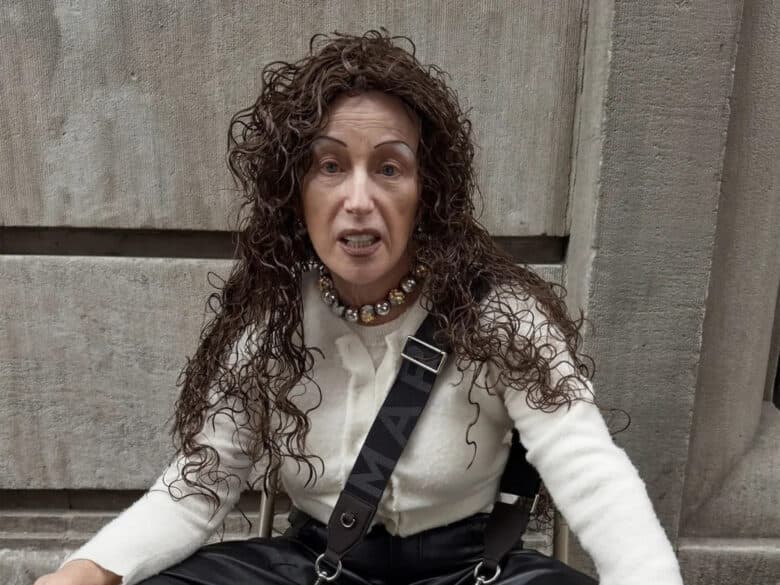Maggi Hambling: “In life we’re just shadows. But we’re a long time dead”
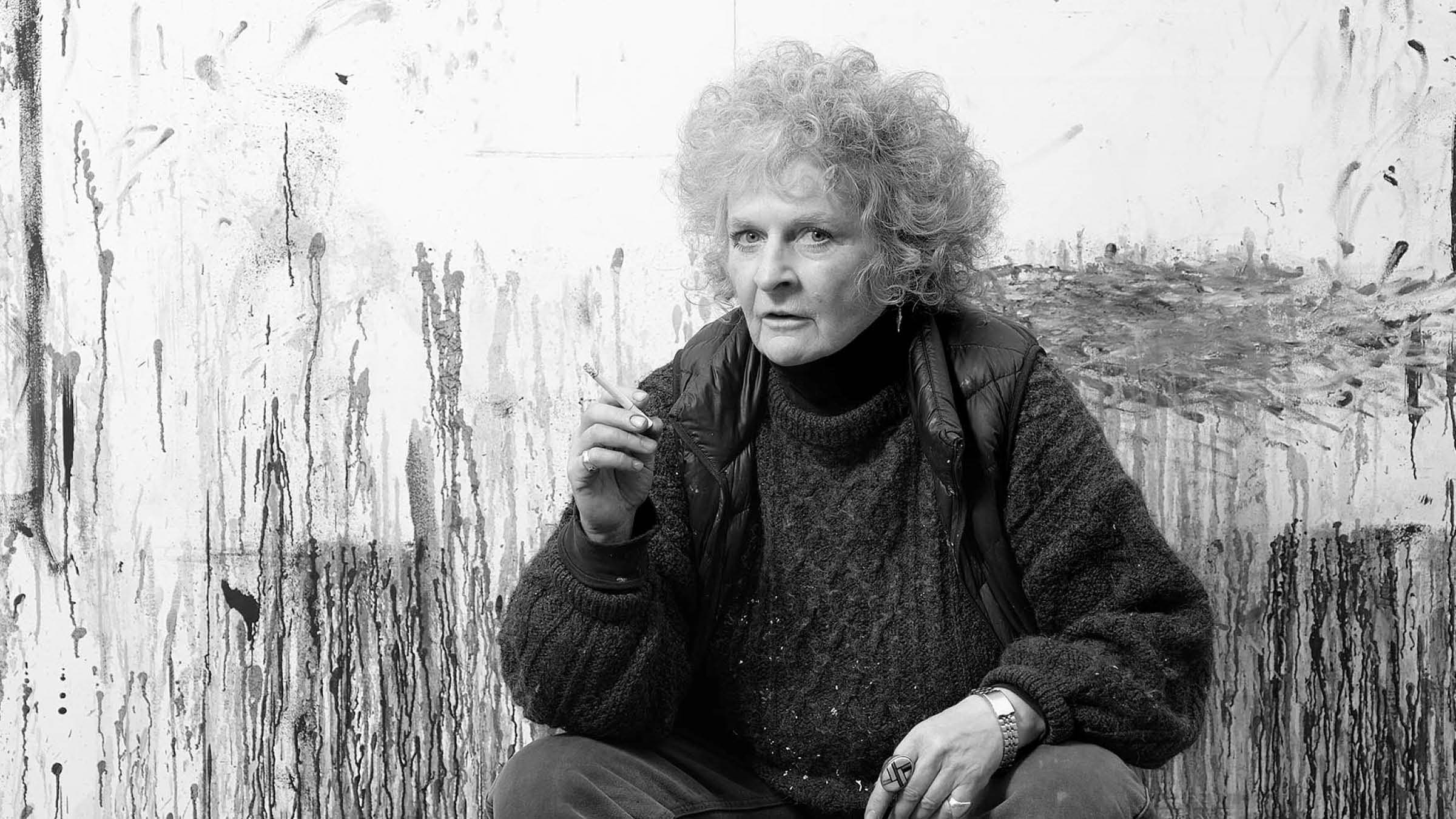
“It has to be compulsory cross-dressing, drinking of special brew and smoking,” Maggi Hambling says of the rules she will leave in place for her funeral after she dies. She’s sitting on a bench inside the gallery of Thomas Gainsborough’s House, over an hour from London’s Liverpool Street station, in a quaint village with a square in the centre flanked by independent shops and tea rooms. The walk from the station in the June heat, dodging innately angry cyclists and kids leaving school early, made standing in a chilly room surrounded by Hambling’s work and navigating her famously frosty eye contact even more surreal.
But in many ways, it was all expected; to be speaking about death with Hambling and constantly wondering if our interaction has landed on total disdain or shy enjoyment. The only thing that stands out as a surprise is the lack of cigarettes between her fingers. Once upon a time, she was rarely ever photographed without a cigarette in hand, but like most of the world, she has swapped them for a vape – hers, a neat contraption that outdoes the Elf Bars and Lost Mary’s the school kids were clasping, one that has its own pouch and is used in a considered way for either thinking or the moments in between. I mention that I still smoke and she replies with a welcomed compliment: “Well done. Keep it up,” she says, entirely genuine.
As Hambling continues on the subject of death, as she does in her work, she mentions Mexican culture (as she will do again in our later interview) and how she admires that their deaths are celebrated in life. We debunk British sensibilities around the inevitable and wonder if we take the wrong approach, leading us to look up at the portraits of her mother laying in her coffin, and across the room at her father laughing. Both painted after death, but both capturing moments and memories of life.
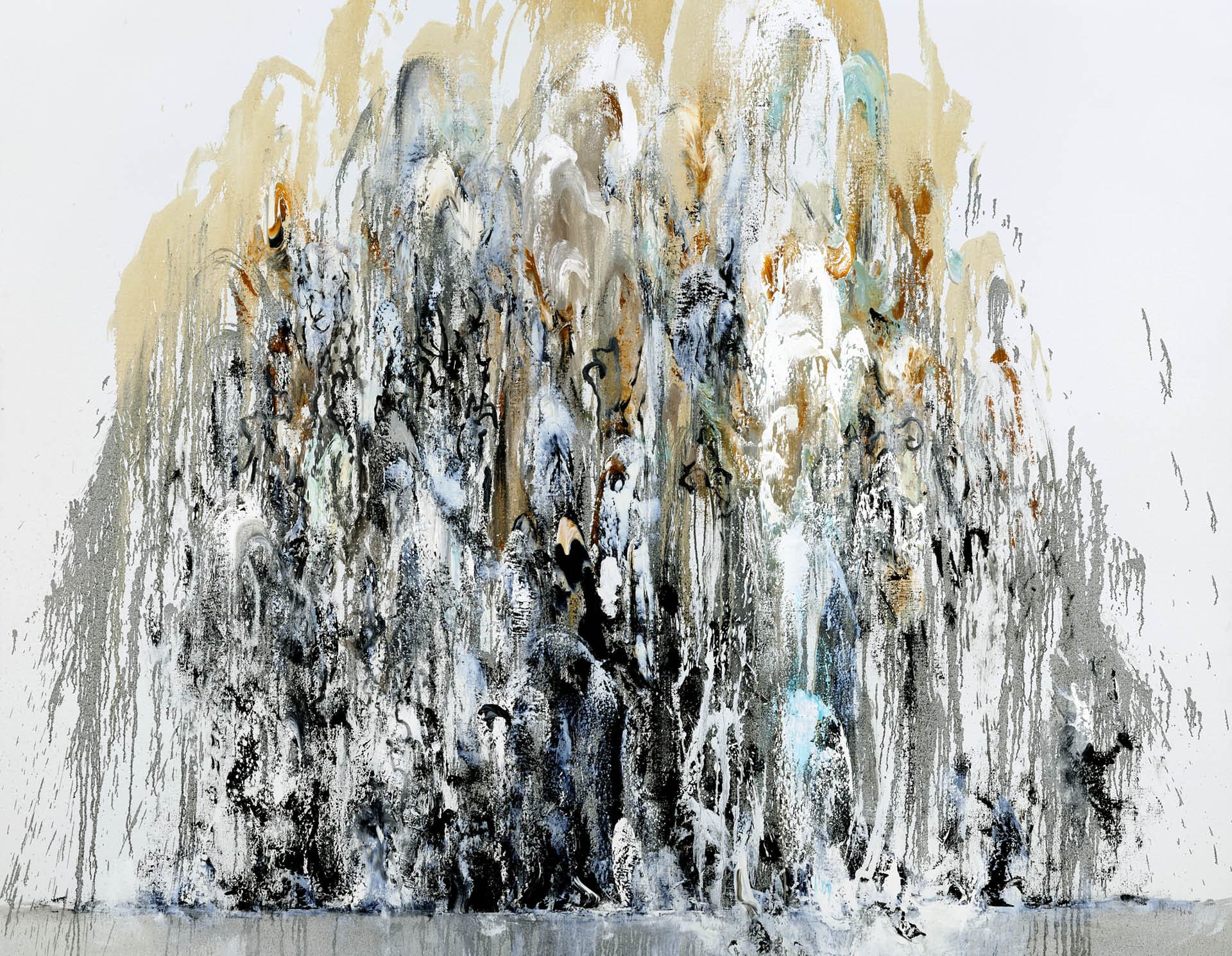
The two paintings sit almost opposite one another at the entrance of the gallery as part of the artist’s retrospective, ‘Origins’. It’s a show that covers six decades and thirty works that bring it all back to a place that sits very close to Hambling’s heart. Not only is Gainsborough’s House situated in her hometown in Sudbury, Suffolk, but the house itself was where Hambling’s love of art, and need to create it, began, when her mother brought her here as a child. She tells me that seeing Gainsborough’s work was like entering into another world, one that inspired her completely, going on to tell the story of how it was her art teacher who got her into smoking as a way of reflecting on a canvas whilst it was invaded by insects sticking to the paint.
Her career since those early days, since the time she put brush to canvas and the time when death started to be a regular contemplation, her work has become a cornerstone of British art. Hambling’s 1998 granite sculpture ‘A Conversation With Oscar Wilde’ in central London was both deemed as popular as other statues like Peter Pan in the city, but also caused friction with some critics over the representation of a smoking, rather unflattering Wilde. Later in 2018, the artist would come under fire again for her ‘A Sculpture for Mary Wollstonecraft’, known as “the foremother of feminism”. Caroline Criado Perez, the British feminist author, said, ‘I can’t see [Wollstonecraft] feeling happy to be represented by this naked, perfectly formed wet dream of a woman’. However, Hambling’s vision for her work has always been unwavering, and it has helped sculpt her career into its illustrious self.
Hambling’s paintings are not physically accurate a lot of the time; they don’t depict features in their perfect forms. But rather her work captures the essence of someone as accurately as one may be able to. They’re like the product of waking up suddenly at three in the morning wanting to sketch down a dream as quickly as possible so as not to forget it.
When I probe as to whether it is emotional for her to bring paintings like the ones standing either side of us back to the place where, in many ways, it all began beside her mother, the frostiness thaws as she talks about how those who die live within us forever.
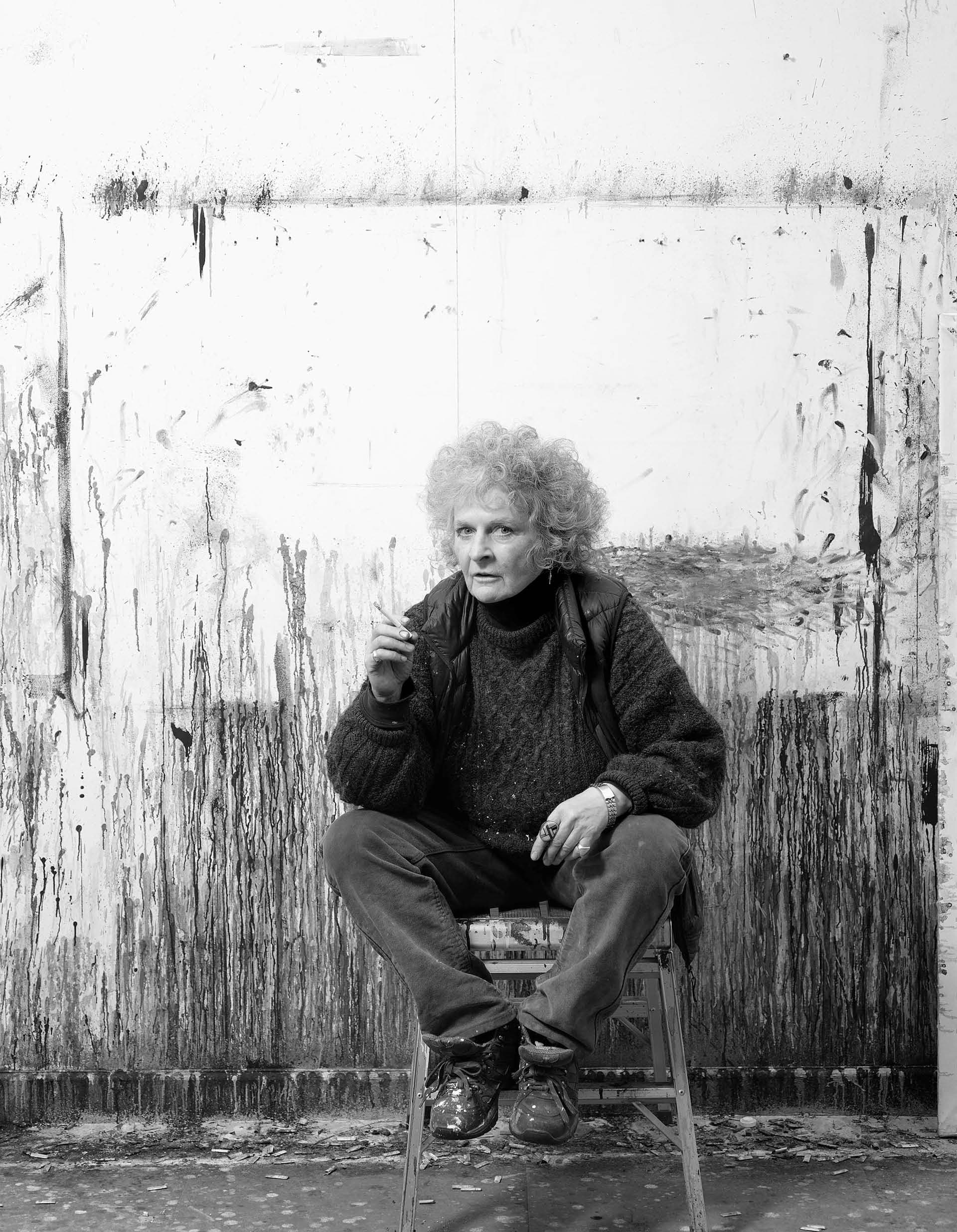
Would you say you are quite spiritual? You said that you believe that after people die they live on inside of us. I guess that’s also very spiritual in a way…
It just seems like a fact of life. If you’ve really loved someone, they go on being around, they go on being around in dreams. They go on being around all the time. I think you are whoever you’ve loved in a way. And I think it’s true for anyone, not just artists. If they’ve really loved someone, the person doesn’t die. They go on being alive inside you.
How much of what inspires you is based on dreams?
When I started to paint portraits of people, I would have a dream about the person I was painting, but then it changed to, in the dream, I was actually painting the portrait. It was quite important to move from painting about the person to dreaming about the person, as opposed to dreaming about painting them. And of course you can have wonderful dreams in which the whole painting you’re working on is absolutely resolved and wonderful. And when you come to do it, the next day it might be nothing like that.
And that’s very odd. You can have your whiskey at six o’clock and you think you’ve done rather well that day and you look at it the next morning and it’s total shit, and vice versa – you think you’ve had a shit day and you look at it the next morning and it’s not so bad.
There are no bloody rules to it. And, you know, the best paintings paint themselves like that coffin one [Hambling points towards the corner of the gallery at a self-portrait of her laying in a coffin], it just happened. That kind of comic person, me in the coffin, it just happened and I’d painted a sort of self-portrait above the coffin, which I was wiping out and wiping out. But then I realised that I had to leave it there as a sort of ghost… In life we’re just shadows. But we’re a long time dead.
That’s interesting because what does that then imply about the kind of relationship between the body – the physical – and the spiritual? Is that something that you think about?
I know when I paint a portrait, I try to paint a person’s spirit. I try to paint the spirit as a person in front of me. I don’t have to think about likeness, that just happens, but in the person’s spirit. So, yes.
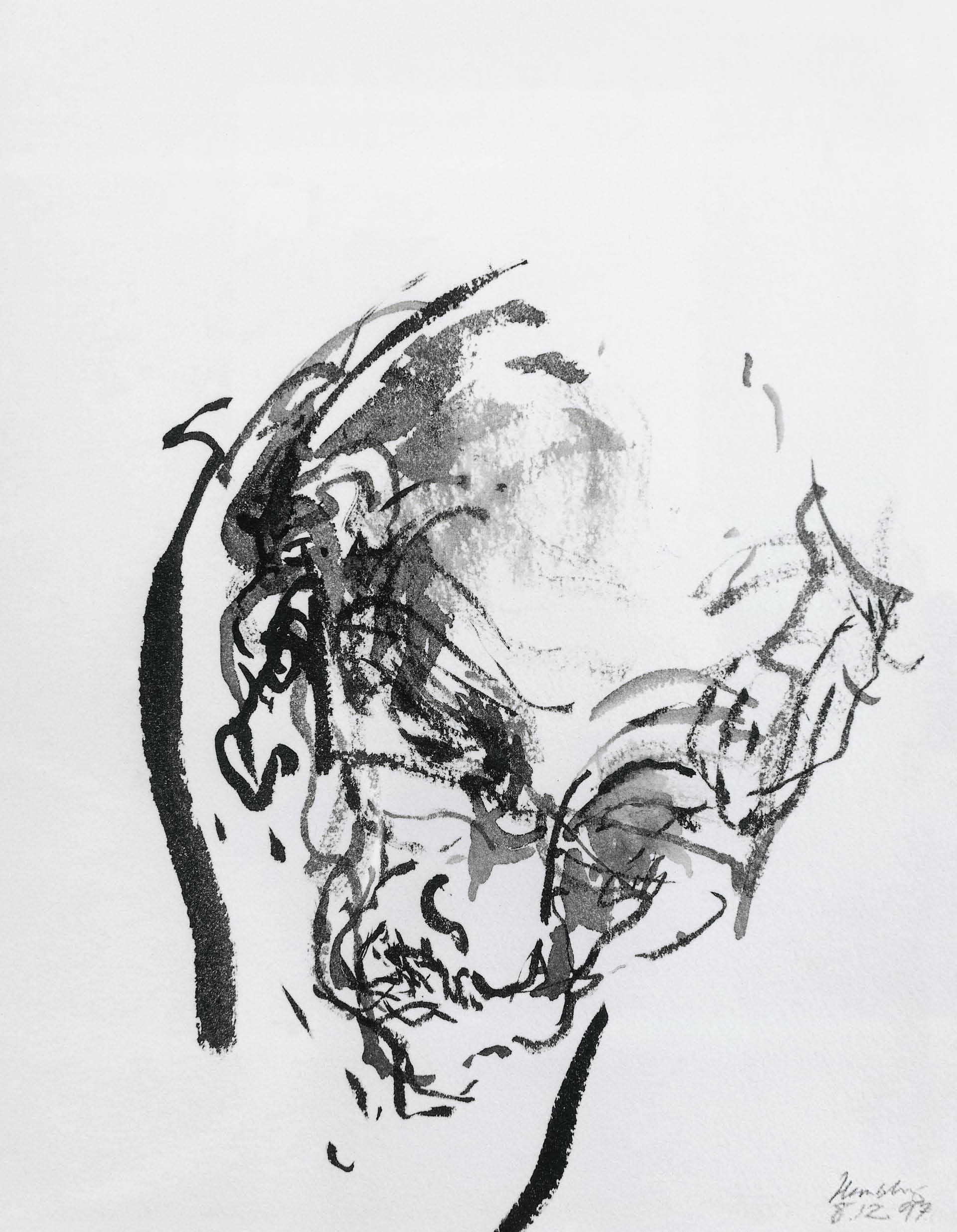
So, take someone that you knew that might have died a fair few years ago, and then you’ve painted them a few times over the years… How does that painting change?
Yes. Like Lett… That’s the most recent one in the show is the one of him working, which just happened. And the ones of my Mother and Father, a couple of years ago. That was a long while after they’d died. I’m not really in charge of what I do. It’s whatever happens. I try to be a sort of channel and get rid of my own shit so that the truth can come from the subject through me into the painting or into the drawing, or into the bronze, whatever it is.
So I say that I’m a channel for it, and that’s very important. Something my art teacher at school said to me was that the artist doesn’t choose the subject, the subject chooses the artist, and I think something can only move someone else insofar as the artist has been moved by the subject. Which means the subject is in charge of every mark.
And not being in control of that, is that quite a liberating feeling?
That’s terrific, because, as I say, when something’s really going right, the painting is painting itself and you don’t feel responsible for it at all. But then you feel responsible for all the bad ones. I can work on something for two or three months and then destroy it, and then a painting can happen in perhaps three quarters of an hour or something. But it couldn’t have happened and unless I’d spent two or three months just doing rubbish. I live in a state of doubt about everything the whole time. The ones that make it are all right, if they’re the ones I haven’t cut through with a Stanley knife.
If you always live in a state of doubt, do you ever feel fulfilled?
When something works that I’ve been working on for two or three months and then destroyed it, that’s a feeling unlike any other, it’s just amazing. But it’s not entirely masochistic. When something does occasionally work, that’s the most wonderful feeling in the world.
You also mentioned that you feel like you’re running out of time…
I am aware of the less time there is and I’m trying to say more with less. I’m trying to make fewer marks, if you like, that say everything rather than a lot of marks that don’t.
So what more do you want to do?
To keep painting every day in the hope of getting a bit better. Everything has to be an experiment. That’s a very overused word, but every time you paint a nose or something, it has to be as though you’ve never seen a nose before or a foot or whatever it might be, so that everything is an experiment.
I completely agree that contemplating death regularly is a really important thing, but could that be what is contributing to feeling like you’re running out of time?
I think I’ve thought about death a lot since I started [painting] at 14.
How come?
I like the attitude in, say, Mexican culture, not just the Day of the Dead, any street festival people come along, all dressed up and they have skeletons on their shoulders, and so they’re both there together, the life and the death is all one thing. Compared with here, we shove it under the table and say ‘somebody’s passed’ or whatever… All these words for death.
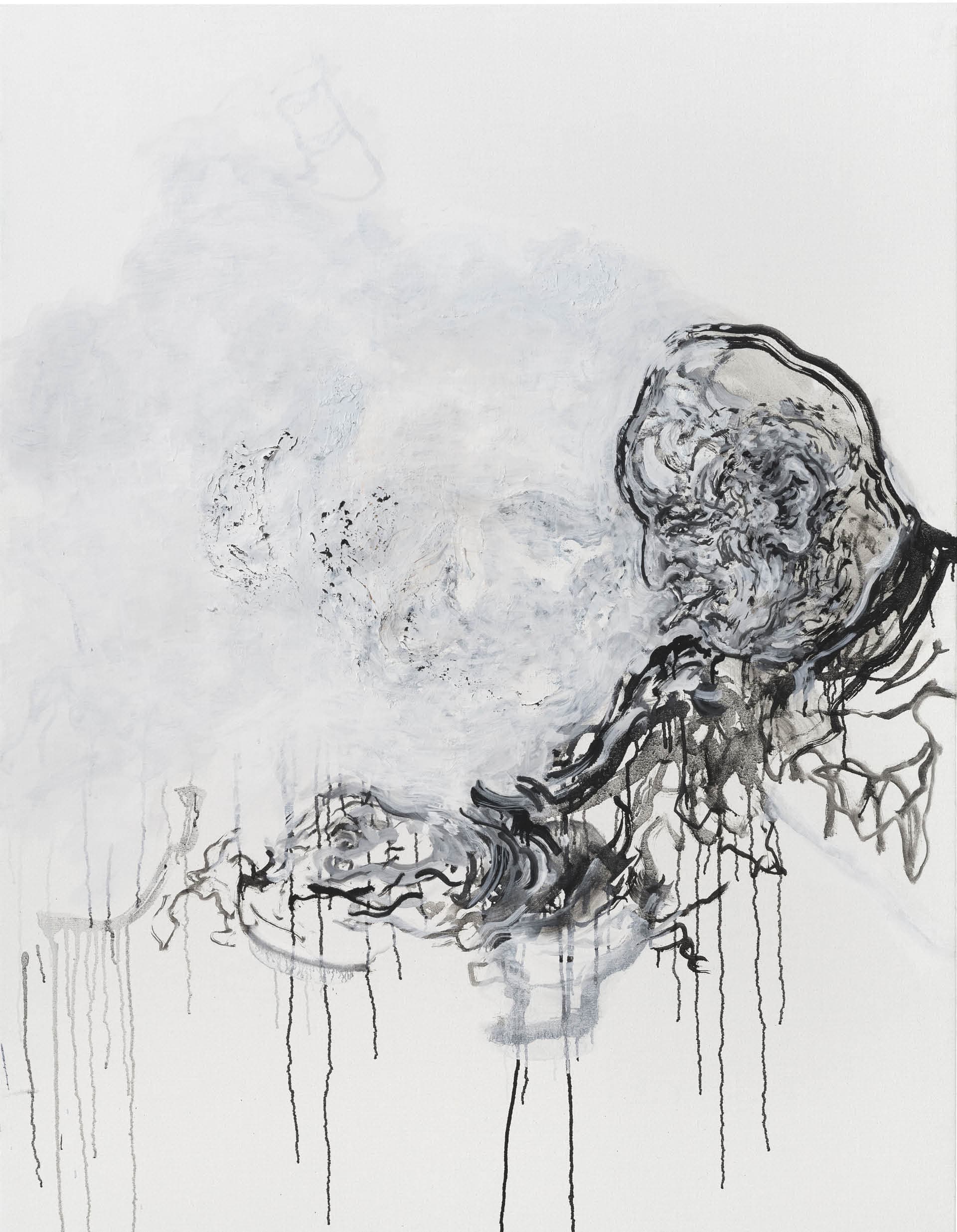
I guess as a nation, our view on death is quite skewed?
Yes, absolutely.
So a painting like the one of your mother in her coffin would potentially be quite shocking to a British viewer?
Yes. I’ve never understood that, because as I’m a visual artist, it’s obviously the last time you’re going to see them before they’re put in the ground or whatever, and so it seems quite a natural thing to draw them before they disappear completely. George Melly always said I’d go down in art history as Maggi Coffin Hambling. It seems quite natural to me to draw people for the last time.
Who was it that said they didn’t want you near their coffin after they died?
It was Amanda Barrie who said when she died she was going to put it in her will that I wasn’t allowed within 20 miles of her coffin with my sketchbook. Which I thought was a bit rude, really… [laughter]
I agree. It’s not shocking and it shouldn’t be shocking, but is there much difference in your mind between a portrait of your mother like that, and then also the portrait of your father laughing?
I did those big heads of my Father on wood. I stopped working on the Oscar Wilde sculpture [‘A Conversation With Oscar Wilde’] that I was working on at the time, and I just worked for about three months on these big heads of my Father. It was very important that I could still hear him laughing when I made them.
When you say you started thinking about death when you were 14, when you started painting, how has your perception or view of mortality changed over the years, do you think?
I can’t swim, but I’m quite good at floating in the sea and there are moments when I’m floating in the sea and looking up at the sky, and I think it’d be okay to die. But the rest of the time I don’t.
Enough death… What are you excited about right now?
Tennis. I’m very positive about tennis. Rather like Samuel Beckett was about golf, you can get obsessed with it. And at the moment I’m obsessed with Carlos Alcaraz, who’s this 20-year-old Spanish player who has all the finesse of Federer, and he’s only 20. He’s pretty damn amazing.
Will you be going to watch?
Oh, yes. I’m a devoted watcher. I learned the other day that Henry Moore, on the first day of Wimbledon, pulled the curtains and took the telephone off the hook, and dismissed all his apprentices and gave them a fortnight’s holiday, and he just sat and watched Wimbledon for over a fortnight… He did nothing else at all.
Thank you, Maggi.
Maggi Hambling’s ‘Origins’ runs from June 17 – October 29. Find our more information here.

